While video games are all about fun and entertainment to users, there is an intricate business perspective to it for developers.
Game monetization strategies are determined ahead of the development and launch to ensure the game fetches ample revenue shortly. From in-app purchases to different formats of ads, game monetization happens in various ways.
Creating a successful game is all about creativity, patience, and hard work. It maximizes the outreach of the game to potential users which in turn ensures its profitability.
Coming up with different ways to monetize the game is as important as designing the characters and storyline of the game.
Read on to learn all about the different methods of monetization in game that are popular and noted for significantly maximizing the profitability of the games.
Game monetization is an intricate part of the development process that can make a difference between profitable titles and economic failures.
Imagine games like Candy Crush, Genshin Impact, or Pokemon GO. Each of these games has survived the test of time and remains relevant for years.
All of them are free to play. You may wonder how they earn profits despite being free. If you observe the games, you will find different modes of micro-transactions within the games.
For example, there are several in-app purchases in Pokemon GO for gift boxes and entries to exclusive events. Similar transactions are also possible in Genshin Impact and Candy Crush.
Modern video games have intricate monetization strategies and often use several different monetization models simultaneously.
The key is to subtly include such monetization models so that they do not interfere with the gameplay and users’ experience. These methods can even be counterintuitive for the players when implemented correctly.
This is also known as the premium model or the pay-to-play model. Simply put, the users have to pay a fee upfront to download and install the game.
In this model, the developer can set a fixed price for the game which the users have to pay and gain access to the full version of the game.
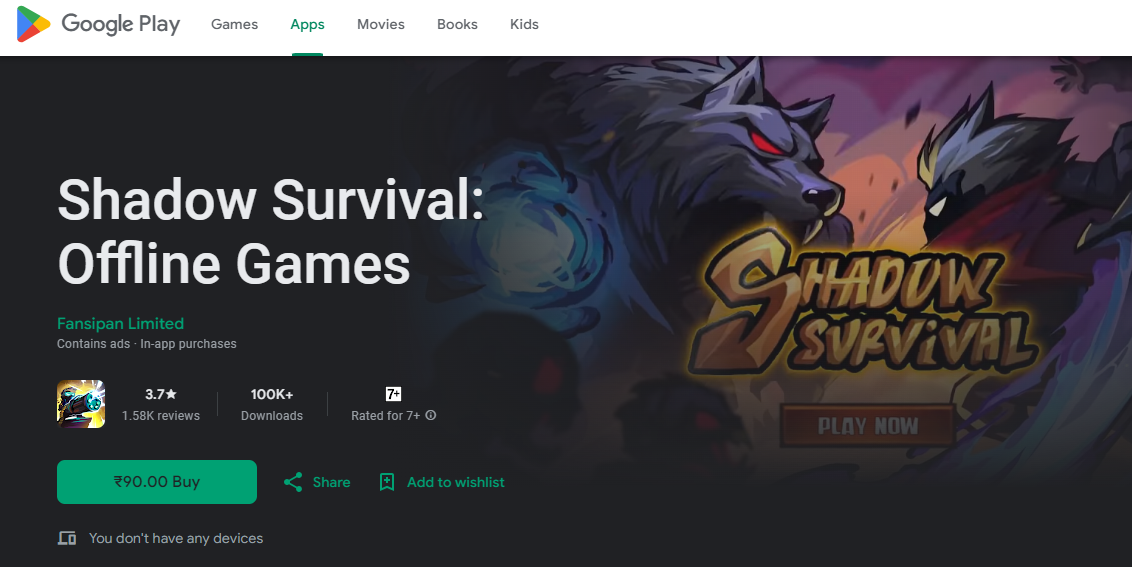
There are no additional in-game purchases and transactions needed to unlock all the contents of the game.
A notable example of this model would be the DOOM Eternal. There are different prices set for the different editions of the game on Steam.
This is a very popular game model, particularly for mobile and online games.
This monetization model is rather profitable as these games can garner a larger audience from different platforms.
In this model, the video game is free of cost and can be downloaded without paying anything upfront.
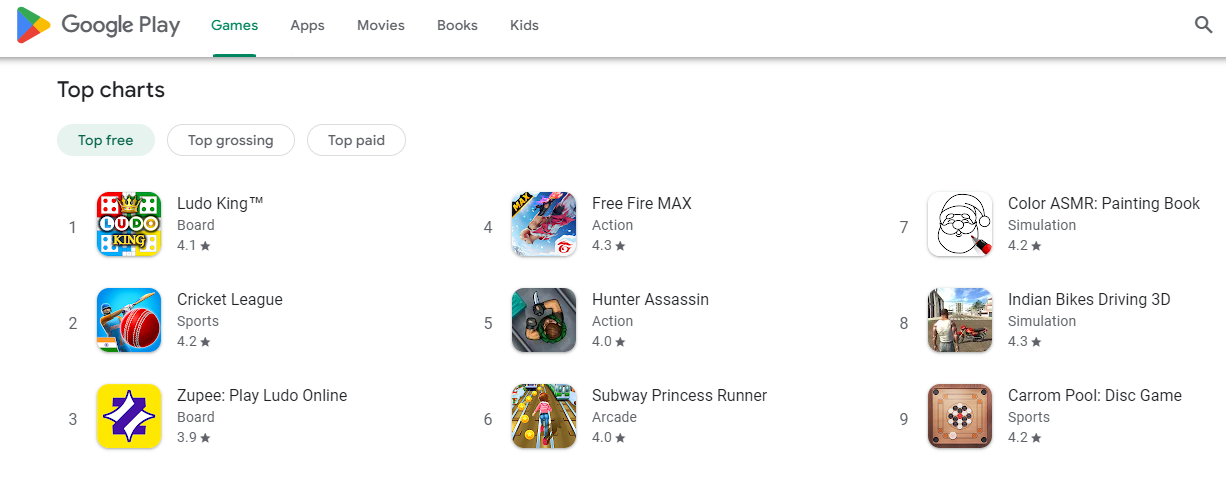
However, it is still profitable to developers as they can generate revenue through in-app purchases and the virtual resources and items within the game.
This includes cosmetic items, different game currencies, resources, power-ups, and other items that enhance the gameplay experience.
The Pay-to-win model is rather controversial and has earned much criticism from consumers.
In this game monetization model, there are in-app purchases, upgrades, and resources that can significantly impact the chances of winning the game.
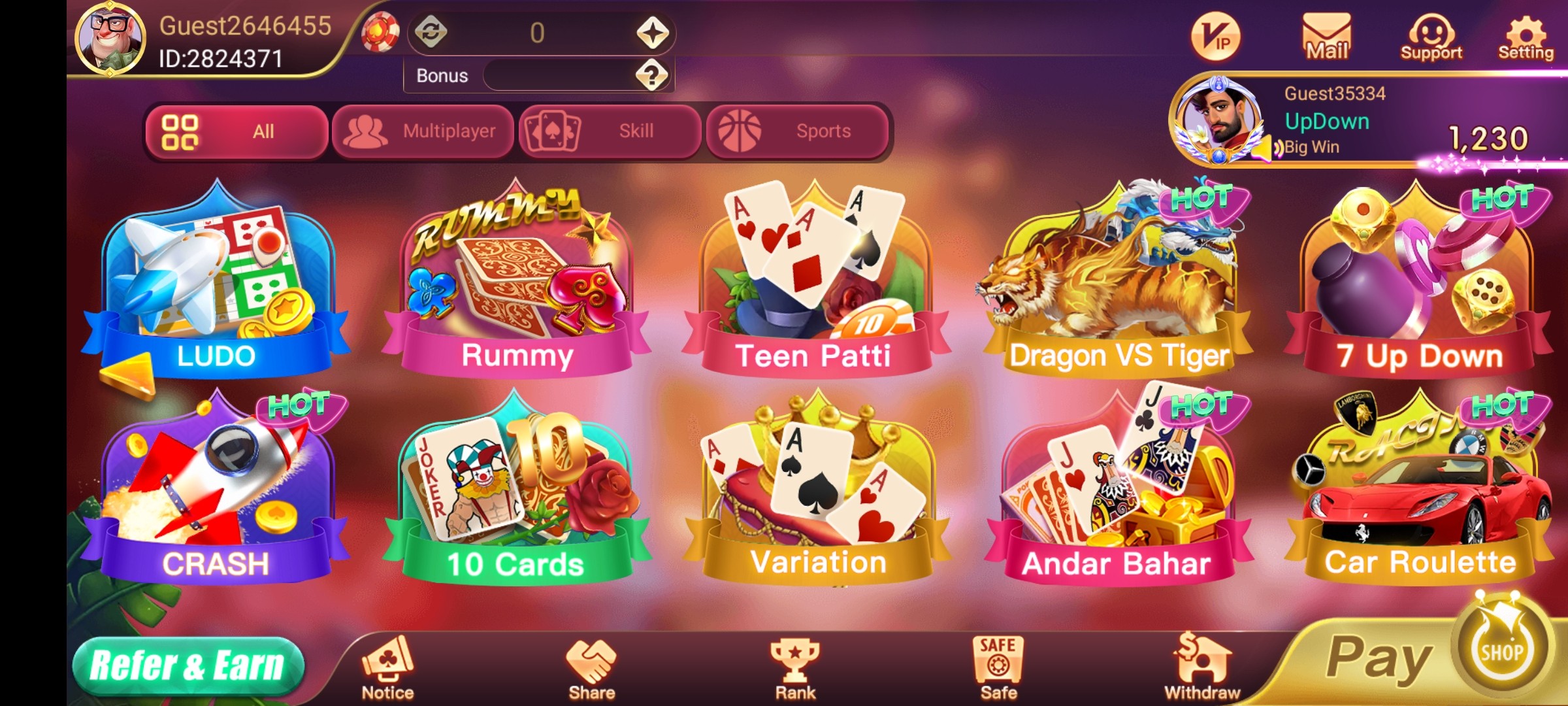
The monetization model earns a lot of criticism as it leads to rather unbalanced and unfair gameplay, especially for those who are not willing to pay for these extra resources.
The model causes a disparity for players who prefer skill-based challenges but are unable to progress without paying for the upgrades.
Game monetization can happen in the form of ads, in-game purchases, online shops, and so on. Here are some of the game monetization strategies that are popularly implemented for different games.
Freemium is a business model which offers some basic products and services to the users and for advanced and premium versions, they charge a certain fee.
In the gaming industry, the freemium model is occasionally used for mobile games. Usually, users are given access to the basic version of the video game with limited resources or in-game currencies.
Once they start enjoying the game and are engaged- they are more likely to purchase their way into advancing in the game.
Games like Clash of Clans and Plant vs. Zombies 2 successfully implement the freemium model as a part of their gameplay to help players get that extra boost.
Developers earn revenue when users pay for different in-app items to level up in the game.
In-app purchases are a popular and common game monetization model witnessed in almost every game to some extent. It can be as little as paying to buy extra in-app currencies or as big as getting premium and exclusive weapons.
This game monetization model allows players to play the game for free but to unlock additional content, characters, powers, weapons, etc. they have to pay.
They can also buy extra credits or clues if they get stuck at certain stages.
By implementing this game monetization model, the developers earn through the microtransactions made within the game.
This is a profitable model for the game developers provided the game is extremely engaging.
When the game engrosses the players thoroughly, they are more likely to make purchases to streamline their game progress.

Take the example of Pokemon GO- usually, you can find resources by completing field research as well as from Pokestops. But it is rather hard to earn pokecoins in the game.
So often users have to purchase the currency using real money. These transactions are inevitable, rendering the game profitable for developers too.
The transaction amounts are rather small for individuals but with millions of players engaging in the game every day, the overall profitability for developers is high.
Most successful games keep these in-app purchase rates within an affordable limit. This way, users would not feel pressured to make huge transactions and they would still make purchases and not stop playing the game due to the expense.
In-app purchases are strategically implemented so that users willingly make these purchases without feeling they are losing excess money to continue playing the game.
Rewarded video ads are ubiquitous in mobile games in particular. In such cases, the users are given the option to play a video ad to earn rewards like extra life or in-app currencies and tokens.
The reward can also come as a level upgrade or even unlocking new characters.
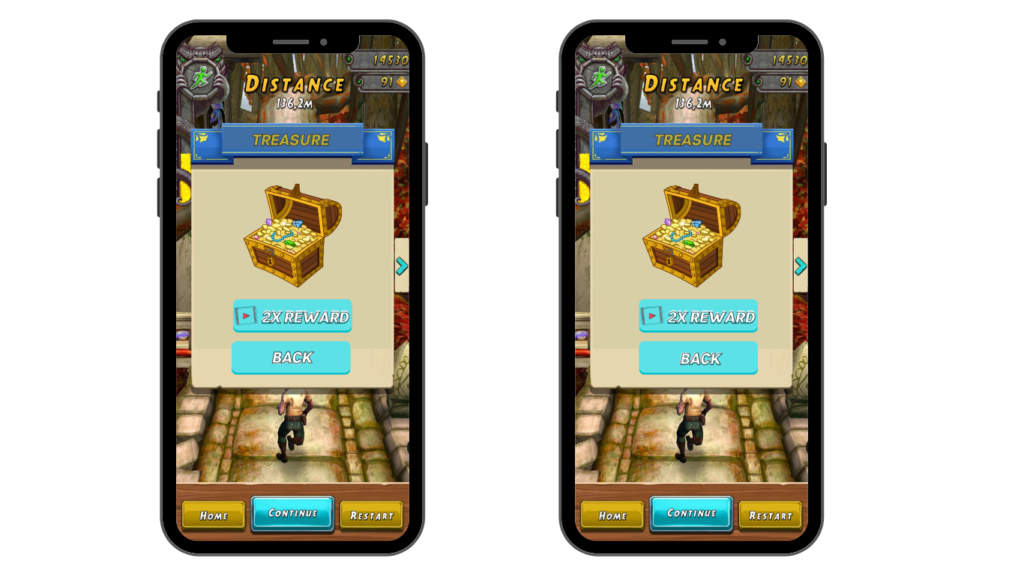
Generally, these ads can be viewed voluntarily without any penalties if you choose to skip them. Users can also choose when they wish to view it. You will come across such ads in games like Temple Run, Subway Surfers, and Angry Birds.
Often developers collaborate with third-party companies and sponsors whose ads are displayed in the game. Both the developers and the companies displaying the ad can earn when users watch them.
Interstitial ads are initiated by the system. They are full-screen ads that are strategically placed in the game, usually between levels or during natural breaks in the gameplay.
When the ads are played, the users cannot play the game. However, they are placed such that the game experience does not get hampered.
Such ads are usually thirty seconds long and some can be skipped within 5 seconds. They are effective ways to generate revenue as every ad cannot be skipped by the users entirely.
An example of a game monetization strategy using interstitial ads is witnessed in Ninja Arashi where such ads are shown after every completed level.
The banner ads have been around for a long time in the internet. They are found in all types of video games- especially in mobile games and online games.
These are static ads that are placed in strategic locations such as above the main menu or at the side of the game screen.
Occasionally the banner ads are used together with subscription-based monetization plans. In such cases, the users are offered discounts on the game subscription if they view the banner ads.
You will witness such ads in a variety of games like mobile casino games, board games, and even FPS and RPG games that can be streamed online.
The offer walls are a store-like segment within the game interface. Such mobile ads are useful ways to gain in-app currencies and other incentives by completing different activities.
Various activities get notified through these offer walls. These include survey forms, watching in-app videos, or even downloading another application. Once you complete the task, you can claim the associated reward easily.
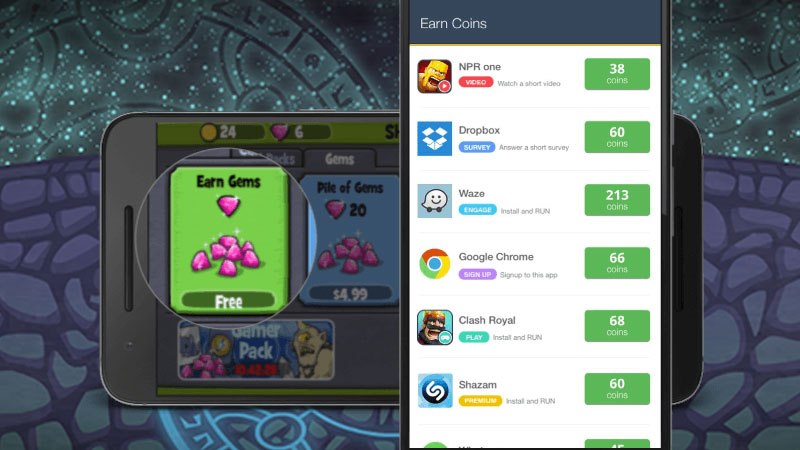
These are usually user-initiated and designed to resemble the in-game shop. These offer walls are generally found within the main menu or created as a separate section in the app.
The mobile game developers can create this segment to facilitate the in-app purchases by organizing all the deals and discounts in one place.
Online shops are gaining popularity as users can find a wide assortment of video games here from the comfort of their homes. PlayStation Stores, iTunes, Steam, and Google Play are some of the popular online shops where you can purchase a game.
Such platforms let you enjoy browsing through games easily and purchasing them with a few clicks on the mouse.
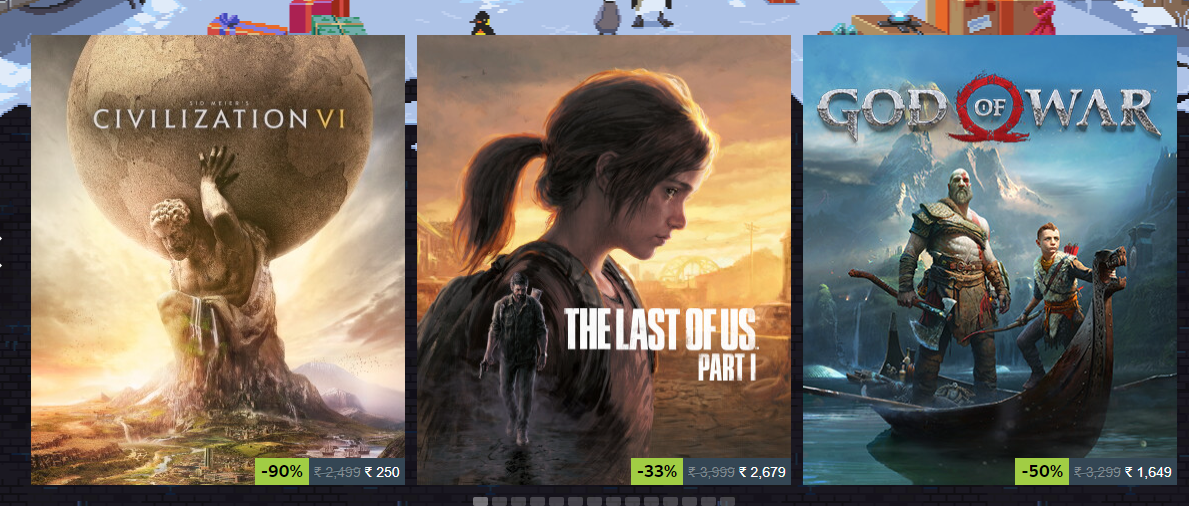
Game development companies publish their games on such platforms to maximize their reach and increase revenue in the process. However, there are some obstacles to enlisting in the game. But once you overcome such challenges, publishing on online shops is significantly profitable for the developers.
The key is to keep affordable pricing and have opportunities like free trial periods to build interest in the game.
Selling add-ons is one of the popular ways to monetize the game. In this monetization strategy, there is add-on game content that can be unlocked for a specific fee.
You will witness this strategy in The Sims Series game. Users are offered many expansions that make the game even more interesting in the form of add-ons. This strategy will be successful only when the players are truly hooked on the game.
Another factor to consider is making these add-ons worth the price otherwise the users may not purchase them again and stop playing the game altogether.
In-game advertisements are the most popular and common monetization model implemented in the game industry. Usually, such games are free to download which ensures maximum exposure to potential users.
The monetization happens through ads displayed in between the gameplay. Generally, players do not mind watching 5-30-second videos provided they are strategically placed. This type of ad can be further divided into three more categories.
Dynamic in-game ads are one of the most common types of in-game ads. This type of ad is geo-targeted and real-time allowing purchases within the game environment. Such advertisements can appear anywhere in the game environment.
The static in-game ads are placed strategically within all types of games for PC, consoles, and mobile games. These ads are planned and integrated into the video game during the development process. As a result, the integration is much more customizable.
Advergames are custom-made video games that are exclusively designed to promote a brand or product. These can be played on any platform and can be as simple as mini-games or full-fledged 3D games. Occasionally they are placed as ads within a game that you already enjoy.
Ad mediation is a game monetization technique that is based on in-game ads. The game developers collaborate and work with different ad networks. As the number of ads grows, it can get tricky to keep track of all of them.
This is where the mediation technique comes into play. With the help of ad mediation platforms, you can add several advertisement networks and work with them through a unified channel. These platforms act as a mediator between game developers, publishers, and ad networks.
Subscription-based monetization in the game lets players access different perks and exclusive content instead of a subscription fee. Such an approach helps to foster long-term player loyalty and a significant and consistent revenue stream.
This includes purchasing premium subscription games, exclusive battle passes, VIP status purchases, and so on.
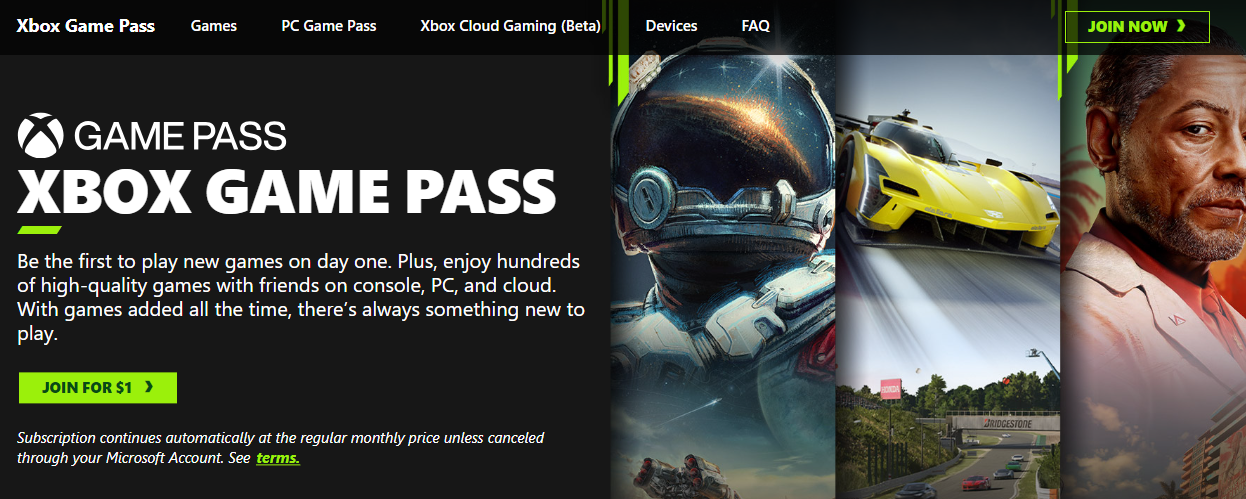
However, to make the monetization model successful, it is crucial to convince the users that subscribing is worth the time. This can be done when the basic gameplay and mechanics are engaging enough for the users.
If they are hooked on the game through these elements, they are likely to subscribe to the game. Such a game monetisation method is witnessed in World of Warcraft.
Loot boxes and gacha game mechanics are particularly enthralling to players as they occasionally surprise players with great in-game items and boosts that propel the gameplay.
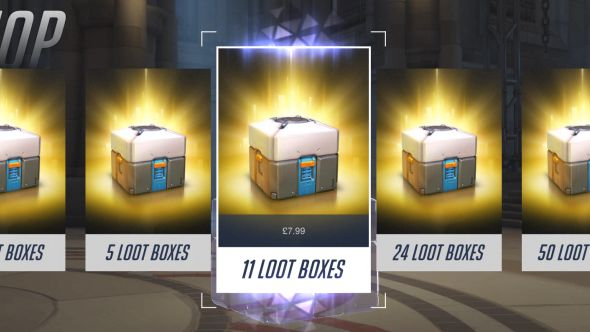
However, to make this monetization method work, these loot boxes must include something lucrative enough so that players find it worth their money.
Genshin Impact is one of the best examples that rely on this monetization method to remain profitable.
Last but not the least is branded content. The game development services provider can collaborate with brands and offer ad spaces within the game. This can also become a principal or additional revenue generator for the game.
However, this would be a feasible solution only when the game already earns a reputation and popularity which makes it an attractive choice for brands.
Game monetization has evolved rapidly over the years and methods of monetization become varied. The key is to choose a monetization method that does not hamper the game experience for the users.
The above-mentioned are some of the popular game monetization models that can help recover the majority of the video game development cost, provided these models are implemented properly.
At Juego Studios we provide all kinds of game development solutions alongside proper monetization for the game. Whether you are looking for mobile game development or other game types- we have the best professionals who can give shape to your vision while making it a profitable venture.
Game monetization refers to the various strategies and tactics used by game developers to generate revenue from their games. In simpler terms, it’s how game studios make money from their creations. This can involve a range of methods, depending on the game and its target audience.
Game monetization models are the different frameworks developers use to create revenue from their games. The basic game monetization models that are used for most video games are,
1. P2D or Pay-to-Download model
2. F2P or Free-to-Play Model
3. P2W or Pay-to-Win Model
Some of the game monetization strategies that are popularly implemented in different games:
Freemium
In-app purchases
Rewarded video ads
Subscription
Interstitial ads
Banner ads
Offer walls
Online shops & Add-ons
In-game ads
Ad mediation
Gacha game mechanics
Branded content